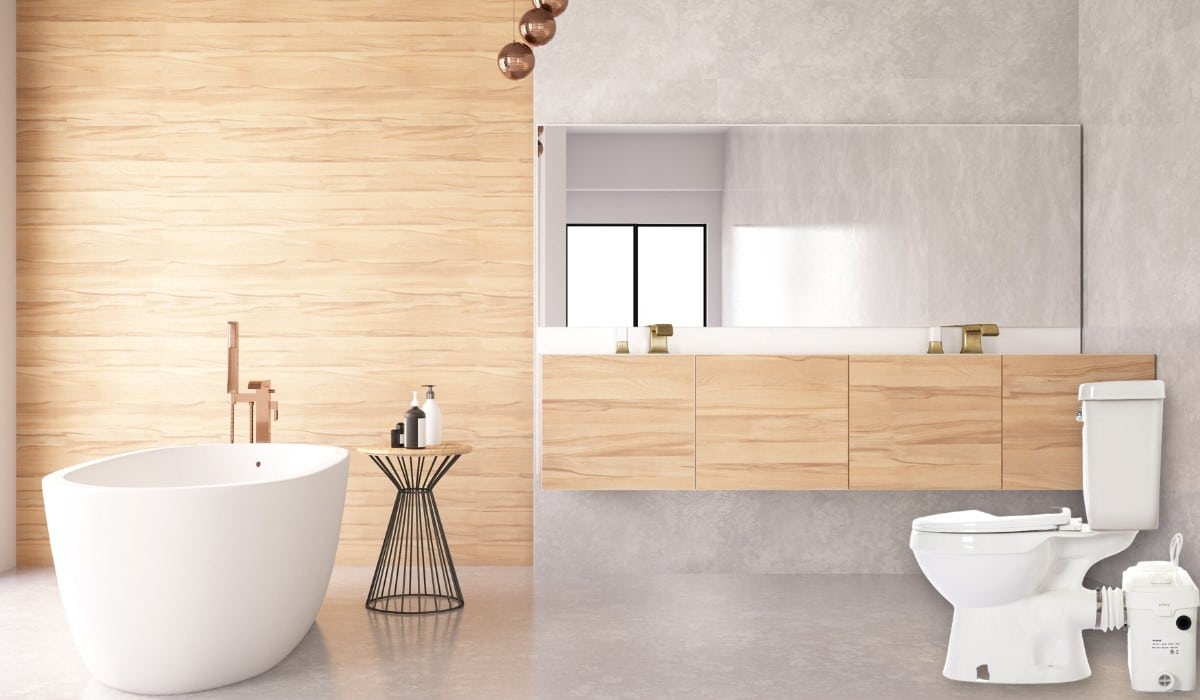Table of Contents
Macerating toilet systems have revolutionized the way we approach plumbing and wastewater management. By utilizing advanced macerating technology, these systems offer a convenient solution for installing toilets in unconventional spaces where traditional plumbing may be challenging.
In this comprehensive guide, we will delve into the workings of macerating toilet systems, explore their advantages, applications, and considerations before installation, and provide insights into choosing the right system and installation, maintenance, and troubleshooting tips.
What Is A Macerating Toilet System?
A macerating toilet system is a specialized plumbing system that uses a macerator unit to break down solid waste and toilet paper into slurries. This slurry is pumped through small-diameter pipes to the existing plumbing system or a dedicated drain line, eliminating the need for gravity-based drainage.
Macerating systems are particularly useful when traditional gravity-flow plumbing is impractical or impossible to install.
Without wasting time, buy a pump up toilet for better uses!
How Does A Macerating Toilet System Work?
The macerator unit is at the heart of a macerating toilet system. This electrically powered device contains a high-speed rotating blade that grinds solid waste and toilet paper into small particles, creating a slurry easily transported through pipes.
When a user flushes the macerating toilet, the water and waste enter the toilet bowl. The macerator unit activates, reducing the solid waste into fine particles. The slurry is then propelled through small-diameter discharge pipes connected to the macerator. Depending on the system’s design, it can be pumped upwards, horizontally, or even both. The slurry goes into the existing plumbing system or a dedicated waste pipe, reaching the main sewage line or a septic tank.
Advantages Of Macerating Toilet Systems:
Here are the prominent advantages of Macerating Toilet Systems.
Versatility and Flexibility – Macerating toilet systems offer unparalleled versatility, allowing toilets to be installed virtually anywhere within a building, including basements, attics, garages, or even below the main sewer line.
Easy Installation – Macerating toilets are relatively easy to install compared to traditional plumbing systems. Moreover, they require minimal disruption to existing structures and eliminate the need for extensive excavation or costly plumbing modifications.
Space Efficiency – The compact design of macerating toilet systems makes them ideal for space-constrained areas. They take up less room than conventional toilets and can have various architectural designs.
Applications of Macerating Toilet Systems:
Now, let’s have a look at the prominent applications.
1.Basement Bathrooms
Macerating toilets are popular for basement bathrooms, where gravity-based plumbing may be impractical. These systems allow homeowners to enjoy the convenience of a bathroom in previously unused spaces.
2.Tiny Homes and RVs
Macerating toilet systems offer an efficient solution for tiny homes and recreational vehicles (RVs), with less space and plumbing options. They also enable the installation of toilets in compact living environments.
3.Remodeling Projects
During remodeling projects, macerating toilets allow for adding or relocating bathrooms without major structural changes. They eliminate the need to break concrete or install extensive drainage systems.
Considerations Before Installing a Macerating Toilet System:
Before installing a macerating toilet system, it is essential to assess the plumbing requirements of your specific installation. Factors such as the distance to the main sewer line, the size of the pipes, and the number of fixtures that will connect to the system should be considered.
Macerating units also require an electrical power supply. Ensure that the installation location has access to a dedicated power source to operate the macerator effectively. Some macerating toilet systems can generate noise during operation. If noise is a concern, consider models with noise-reduction features or locate the system away from living areas.
Consider the capacity and performance of the macerating system based on your specific needs. You might want to use a flowmeter. Larger systems with more powerful motors are appropriate for heavy use, while smaller systems could be enough for sporadic or moderate use. Ensure the macerating toilet system is made of durable materials and has a good reputation for reliability. It also guarantees longevity and lowers the likelihood of needing regular maintenance or replacement.
Installation and Upkeep:
You must learn the details of macerating toilet installation! The following are a few installation and maintenance-related things you should be aware of:
- Installation
Carefully follow the manufacturer’s installation instructions. If you need additional assurance in your plumbing abilities to ensure a proper and secure installation, consider contacting a professional plumber.
- Maintenance Tips
Regular maintenance is crucial for the optimal functioning of macerating toilet systems. It includes periodic cleaning, checking for clogs or debris, and inspecting the pump and macerator blades for any signs of wear.
- Troubleshooting Typical Problems
It can be easier to troubleshoot and fix small difficulties if you are aware of typical problems, including clogs, pump failures, and electrical issues. If you experience recurring problems, see the user guide or a professional.
To Sum Up!
By providing a useful and effective substitute for conventional plumbing, macerating toilet systems make it possible to put toilets in unusual places. They are a fantastic option for many applications because of their adaptability, simplicity of installation, and compact size. These systems may offer dependable service for years, boosting convenience and functionality in any facility, with correct installation, routine maintenance, and troubleshooting skills.


